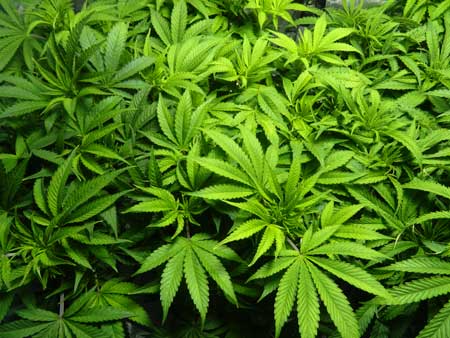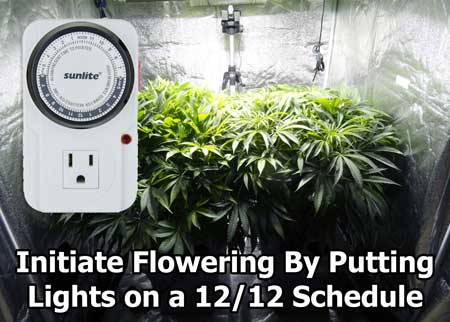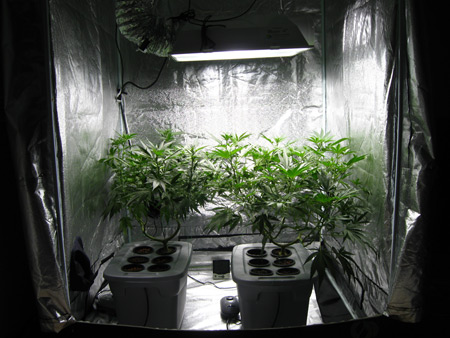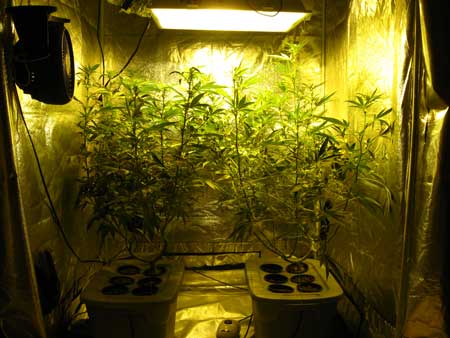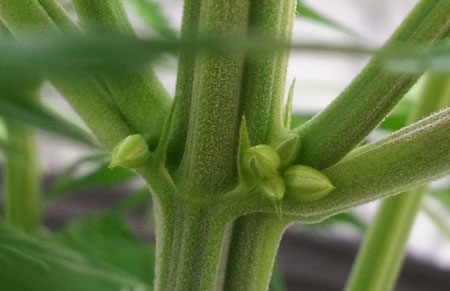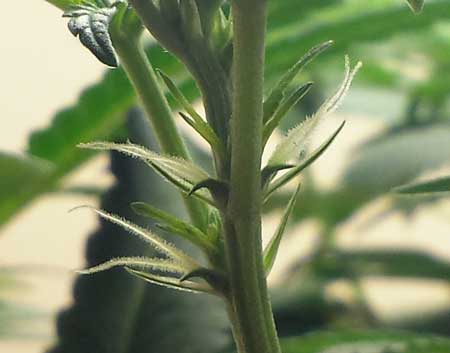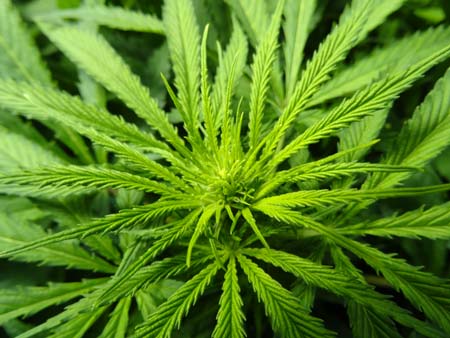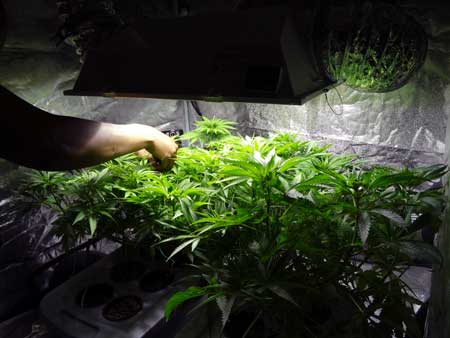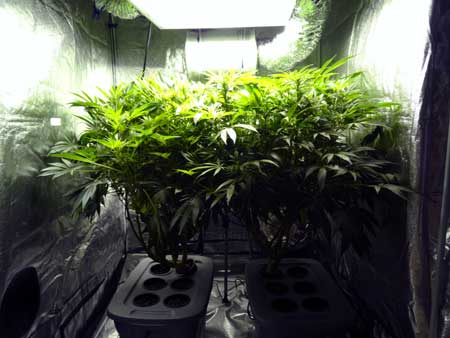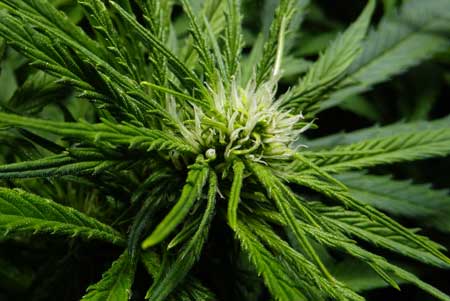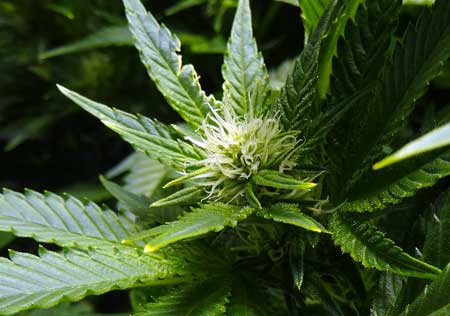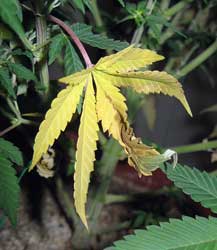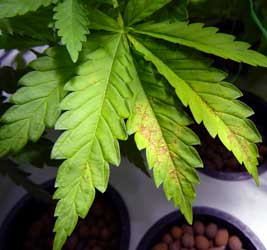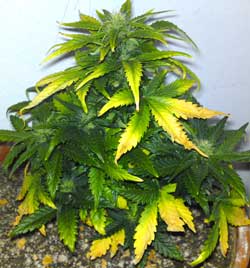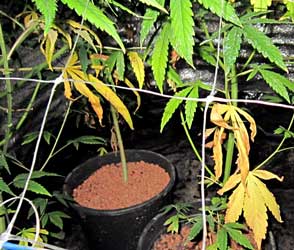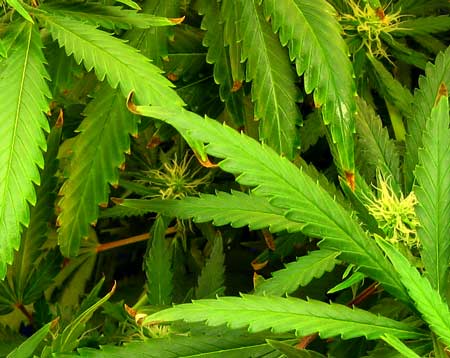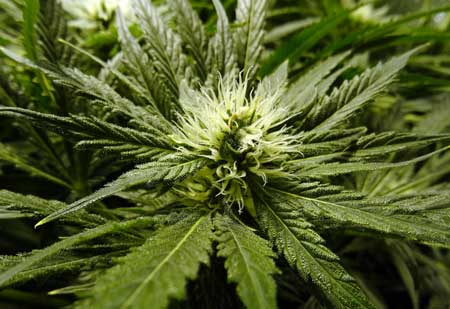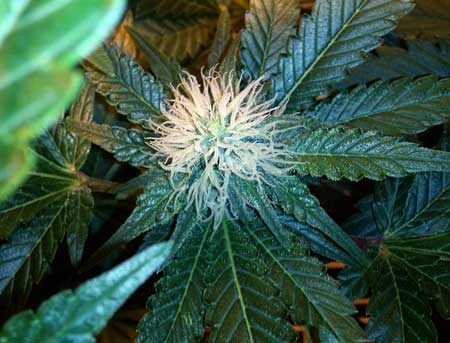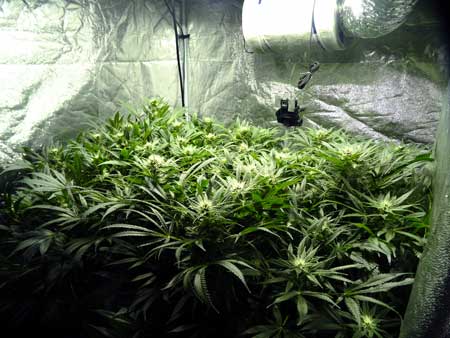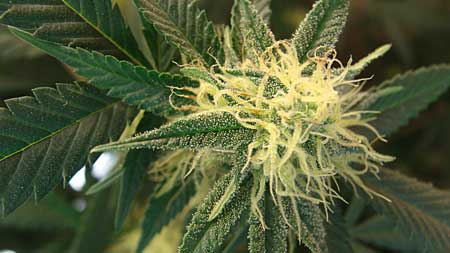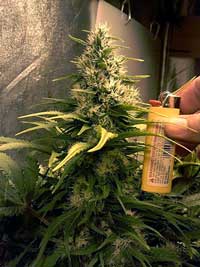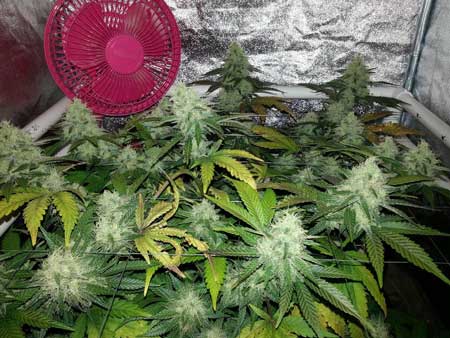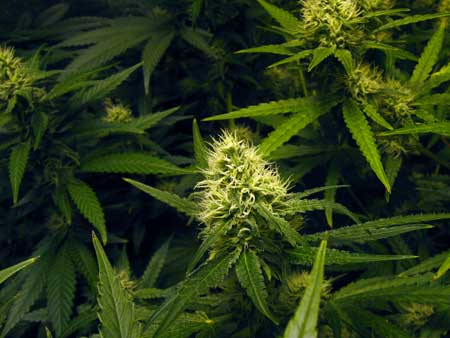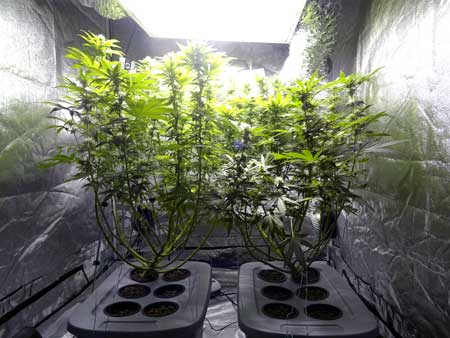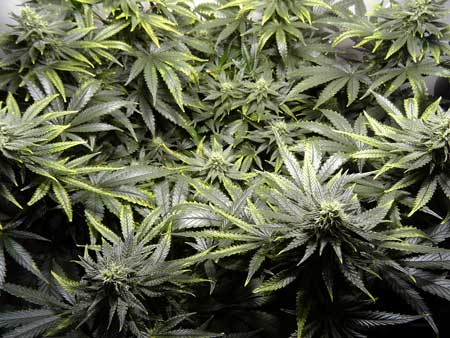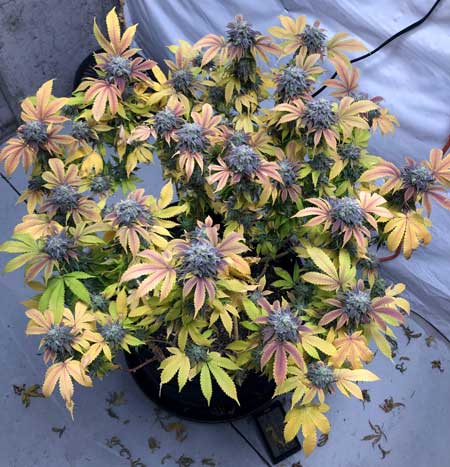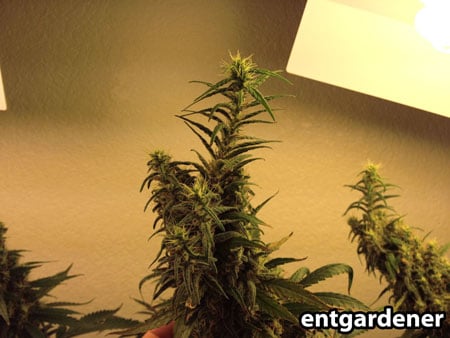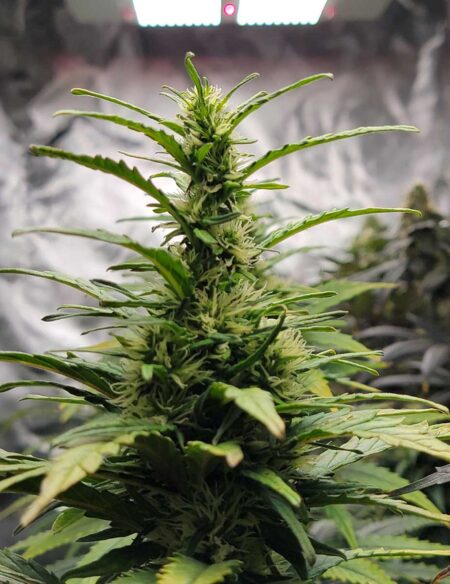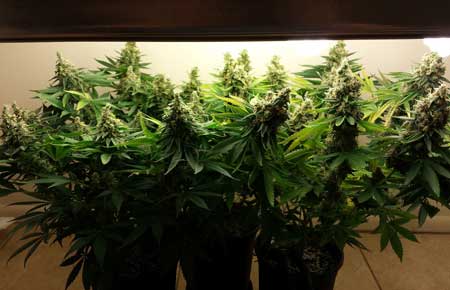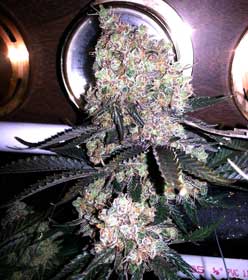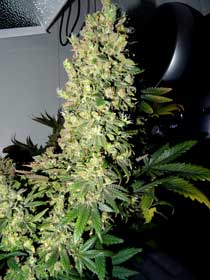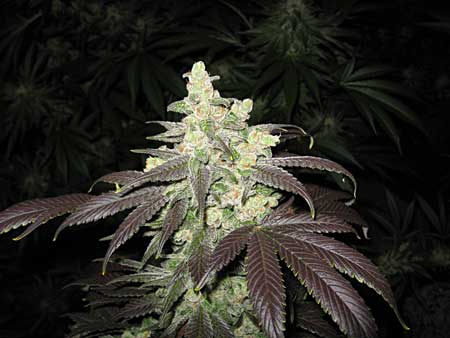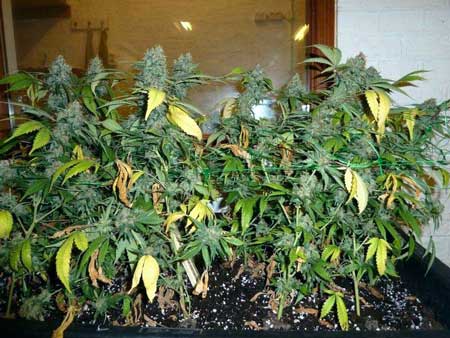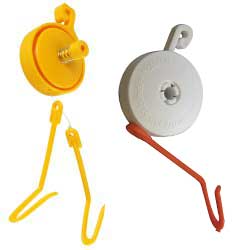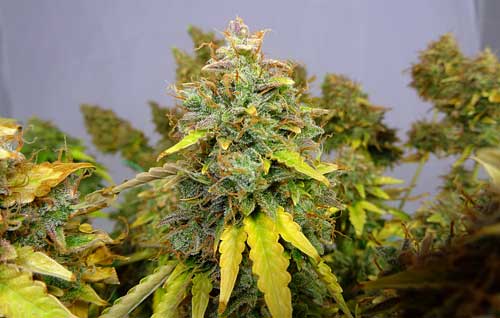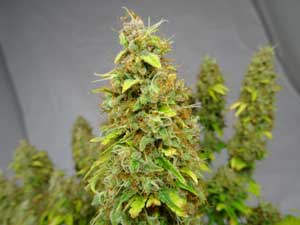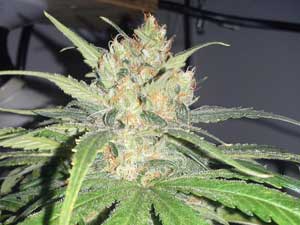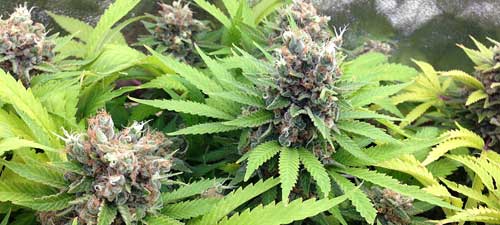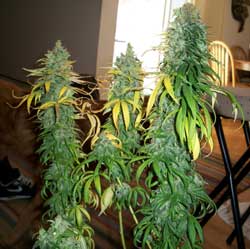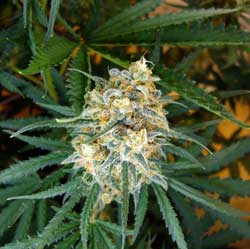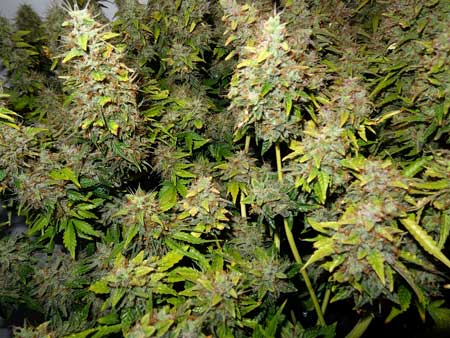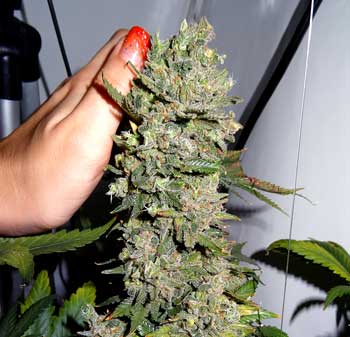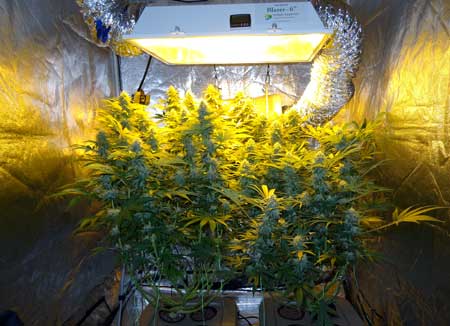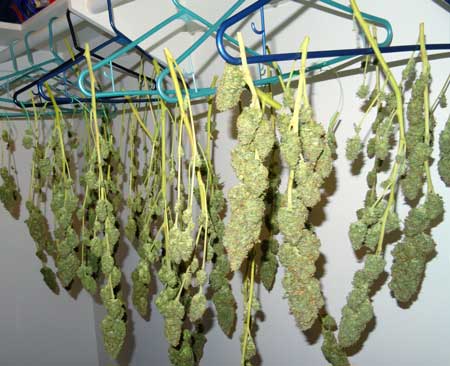by Nebula Haze
Table of Contents
Growing Marijuana Flowering Stage Timeline
Week 1-3 – Transition to Flowering
Week 3-4 – Budlets Form
Week 4-6 – Buds Start Fattening Up
Week 6-8 – Buds Ripen, Pistils Darken – some strains spend longer in this stage
Week 8+ – Flowering Ends, Final Flush, Harvest
Introduction to the Cannabis Flowering Stage
Do you want to know what to expect when growing marijuana in the flowering stage? First, let’s talk a little bit about the beginning of your plant’s life so you can understand exactly how the flowering stage comes in. During the phase known as the vegetative stage (the first stage of life for marijuana), a cannabis plant grows about how you’d expect… like a weed! In the vegetative stage, a cannabis plant only grows new stems and leaves, and can grow several inches a day with the added ability to recover from just about anything.
Even if you run into major problems in the vegetative stage, you can bring your plant back from the brink of death simply by addressing the problem and giving your plant some TLC.
In the vegetative stage, your cannabis plant only grows stems and leaves and is resistant to problems. It grows like a weed!
However, things aren’t so rosy in the cannabis flowering stage. In the flowering stage, your cannabis plant grows very differently and is much more sensitive to problems. The tricky thing about the flowering stage is that you don’t have much room for error and big mistakes can lower your yields.
In order to maximize your yields, it’s important to know what to focus on during each part of the flowering stage. It’s also really helpful to know what to expect so you know when something is going wrong!
Week-by-Week Timeline of the Flowering Cycle (with pictures)
This marijuana flowering stage “walk through” will explain exactly what to expect week-by-week while your plant is making buds, and it’ll tell you what you need to do to ensure you get to harvest with the best bud quality and yields possible!
Week 1-3: Transition to Flowering
When growing cannabis indoors, the flowering stage begins when you change your grow lights to a 12/12 light cycle (12 hours light, 12 hours darkness each day). Getting those 12 hours of uninterrupted darkness each day gives your plant the signal that it’s time to start flowering. In a way the plant “thinks” winter is coming because the days are getting short.
Note: It’s common to think that a cannabis plant getting 12 or fewer hours of light is what initiates flowering, but it’s actually uninterrupted darkness that does the trick! If the plant gets any light during the dark period, even for just a minute, it won’t make buds! In fact, a flowering plant may even revert back or express hermaphroditism if it gets any light at night!
Outdoors, it’s also the days getting shorter that cause a cannabis plant to start making buds in late summer, but outdoor buds develop on different schedules depending on the local climate. This tutorial is meant to explain how a cannabis plant usually develops when grown indoors since that is done under controlled conditions, and plants tend to grow the same way.
For the purposes of this indoor cannabis growing tutorial, the flowering stage starts the day you switch to 12/12.
Autoflowering strains of cannabis don’t need special light periods to start flowering, however the cannabis flowering timeline in this tutorial is a good general guideline for indoor auto-flowering strains, too. Their “vegetative stage” lasts about 3-4 weeks, so as long as you start counting at week 3-4 from seed (when they start getting their first pistils) this flowering timeline will generally apply to autos too, though sometimes they finish up faster.
During the first few weeks after being switched to a 12/12 schedule, your plant will be growing like crazy and rapidly gaining height. In fact, a cannabis plant can (and frequently will) almost double in height after the switch to 12/12. This period of super-fast and often stretchy growth is sometimes referred to as the “flowering stretch.”
Example of flowering stretch – what to expect
Pre-Stretch – just before 12/12
Post-Stretch – 4 weeks after 12/12
Although your female plants will start sprouting lots of white pistils, they usually won’t start growing “real” buds with substance quite yet. If you’re new to growing cannabis, it’s very important to note that only female cannabis plants make buds.
Did you know you can figure out if a plant is male or female while it’s still in the vegetative stage?
If your plant is male, it will start growing distinct pollen sacs and should be removed from the grow room immediately to prevent it from pollinating your female plants and causing ‘seedy’ buds. Learn where to get feminized (all-female) seeds online so you don’t have to worry about male plants.
Remove any plants growing pollen sacs instead of pistils, because they are male and won’t make buds. Plus they can pollinate your female plants and cause them to grow seeds! What if my plant is growing both pistils and pollen sacs?
Female plants should be growing pistils wherever a fan leaf meets a main stem. They look like white wispy hairs emerging from the joints
During the first few weeks of the flowering stage, you will see bunches of single leaves forming at the tops of your main colas (like in this pic). Soon white pistils will start coming out of the middle of the bunches, and they will become your main buds!
During week 1-3 of the flowering stage, your plant will mostly be producing new stems and leaves as it grows taller. Right now your plant is still very resilient and can handle problems just like in the vegetative stage. However, it’s still very important to avoid problems and take great care of your plant!
As part of the stretch, your plant will be growing out its bud sites. Stunting growth at this point could cause the plant to make smaller and fewer bud sites than it would if it were healthy and growing fast.
If you have more room in your grow space under the light to spread your plants out, or if you are running out of headroom, it is important to gently bend stretching stems down and away from the center of the plant to help maintain a flat canopy (a technique known as low stress training).
During the stretch, gently bend new stems down to try to maintain a flat, even canopy.
If you keep up with it during the stretch, you can prevent any one stem from getting much taller than the others.
When stems are new, they are flexible and easy to bend, but they quickly harden up and turn woody. By keeping a close eye on your plant and bending any too-tall branches down and away from the center of the plant as soon as you can, you will maximize your yields since that flat shape will most efficiently use your grow lights. If all your main bud sites are spread out and about the same height, you can increase your yields by up to 40% or more!
Spreading out your bud sites and maintaining a flat canopy can increase cannabis yields by as much as 40%…or even more!
At this point, you only have a few weeks left until you lose the ability to do any further training, so don’t miss this last opportunity to control the shape of your plant, especially if you’re running out of room!
The mad stretching of the first few weeks will start to slow down in week 3-4, but your cannabis plant will still be growing upward. At this point you’ll actually start to see real buds instead of just hairs (I like to call them “budlets” during this stage) and all the pistils will be white and sticking almost straight out.
“Budlets” start forming where buds will be, with white pistils sticking straight out.
Your plant is going to start getting a little picky about the environment and nutrients in week 3-4 so it’s important to keep a close eye on your garden. You need to make sure your plant stays healthy all the way to the end of the flowering stage, and you’ve still got more than a month to go so you don’t want your plant to run into any major health problems now!
Be especially aware of leaf symptoms, for example: discolored/yellow leaves, or if your plant starts rapidly losing leaves. It’s completely normal to lose a few leaves at this stage, especially leaves that aren’t getting light (which often look like they may have a nutrient deficiency and then fall off, but it’s just your plant cannibalizing the leaf since it isn’t getting any more light). That being said, overall your entire plant should still be lush and green in week 3-4 while your budlets are forming.
As your plant continues through the flowering stage, it’s normal to see a few yellow or discolored leaves near the bottom of the plant, especially in the places where the leaves are no longer getting light. This isn’t anything to worry about if it’s just a few leaves as the plant is putting its energy to the top of the plant and the buds.
But it’s not normal for your plant to be yellowing or losing leaves rapidly like this
Diagnose sick plants as soon as possible!
Another thing to be aware of is nutrient burn. This is what happens when you give your plants too-high levels of nutrients – the tips of all the leaves actually get “burned.” While a little bit of nutrient burn won’t hurt your plant, it’s important to try to avoid it if you can. Your plant can never recover the parts of the leaves lost to nutrient burn, so if you accidentally give too much nutrients in the future, the burning will start “climbing” up the “fingers” of the leaves. Cannabis leaves tend to look much less appealing/pretty as more of each leaf gets burned. However, even cannabis plants with severe nutrient burn can produce good bud, so don’t give up if you run into thi problem!
Try your best to avoid nutrient burn (burnt leaf tips caused by too-high levels of nutrients), as it can only get worse as the flowering stage continues.
When nutrient burn starts getting bad, it can actually start discoloring your sugar leaves (the small single-finger leaves emerging from your buds). If nutrient burn reaches the base of the sugar leaves, you won’t be able to trim it off at harvest so your buds will end up with yellow/brown spots where all the leaves were burned.
Nutrient deficiencies can also cause the same problem if left unchecked. This doesn’t necessarily affect the potency but buds don’t look as good as they could have.
So to grow bud you’re proud of, you’ll want to be aware of avoiding nutrient burn from the beginning. Since your plant isn’t really growing many more leaves, you need to really care for the ones it has left.
If they haven’t already, your plants may start to smell!
Some strains like Blue Mystic and Northern Light are known for having relatively low smells, but many strains can start getting pungent quickly!
Learn more about controlling smells in the grow room.
Week 4-6: Buds Start Fattening
Your cannabis budlets are fattening and soon you will have buds with substance! They will still have nearly all white pistils sticking straight up in every direction, but the buds themselves will be getting fatter every day.
By weeks 4-6, the stretch is almost over and you no longer need to pay attention to training your plant. Instead of trying to keep the colas down, from now on you’re doing the opposite – trying to hold any buds up if they start getting too heavy for your plant!
If you’re having trouble fitting your plant in your space within a safe distance from your light, your training options can start looking very grim.
If your plant has grown into the light, you may have to consider last-resort solutions like supercropping (a high-stress training technique of forcing stems to bend at a 90° angle) which you normally should never do this late in the flowering stage.
Since you don’t get many more new leaves, you need to think of your remaining leaves as armor – insurance against any nutrient or leaf problems.
Although you don’t want an excessively leafy plant, and strategic defoliation (for advanced growers) can be helpful to expose bud sites, it’s important to make sure that you let your plant keep enough leaf coverage to power the growth of buds. It may need a little extra help if something happens!
Although defoliation may be used to expose buds sites, make sure your plant still has enough leaves (“armor”) to last until the end of the flowering stage to power the growth of buds, and as insurance against any possible nutrient or leaf problems.
Although most of the pistils will probably still be mostly white by the end of week 6, the buds are getting bigger and denser every day.
Week 6-8: Buds Ripen, Pistils Darken
From now on your plant won’t be making any new leaves or stems. It has completely switched gears away from vegetative growth and all its energy will be focused on growing buds from now until harvest.
It’s normal for some of the bottom leaves to begin to turn yellow as the plant continues to put its energy in the leaves and buds getting the most direct light, though the plant should still be mostly green from top to bottom even in week 6-8.
At this point of the flowering stage, your plant may start getting much more picky and sensitive to nutrient problems, including those caused by incorrect pH at the roots. Now is not the time to slack off on caring for your plants!
If your leaves are already turning yellow in week 6-8 it’s too early! Early leaf yellowing is likely caused by either a nutrient problem or light burn (which are both much more common in marijuanas flowering stage). React quickly to problems so you don’t hurt your yields!
If many of your leaves turn yellow or die early, your cannabis plant can’t make nearly as much energy from light, and buds will be smaller than they could be. For example, if the following grower had kept the leaves green and healthy for longer (by quickly fixing nutrient deficiencies), all these buds would be bigger.
Quickly diagnose sick plants & don’t ignore problems!
Another common problem to watch out for at this stage: if you see a whole new bud or “spire” emerging out of the side of an old bud that’s already developed, it’s usually a sign of heat or light damage.
“Foxtailing” like this is caused by too much heat or light – it’s not normal bud growth! If you see this it means you need to control your temperature and light levels to prevent further damage.
Here’s another foxtail growing from a cannabis bud under a powerful LED grow light. The grower should have turned down the light intensity or moved the LEDs further away. Another option would be to bend the whole branch down and away from the light. I personally cut off big long foxtails as they don’t fatten or make a significant amount of bud, and seem like they may reduce fattening lower down on the bud.
Learn more about marijuana foxtails caused by heat or light stress
From now until harvest it’s extra important to avoid too-high levels of light and especially heat because (in addition to foxtailing) this can discolor/bleach/burn your buds and may even burn off some of the THC (potency) or terpenes (smell).
If things are going well, your buds should be really hitting their stride at this point. They will grow in size significantly over the next few weeks.
Week 8+: Flowering Ends, Final Flush, Harvest
Home stretch! You’re so close! To make sure things go smoothly until harvest, treat your plant like a movie star and attend to its every need! Very few strains of cannabis are ready to be harvested before week 8, but now we’re at to the point where some short strains are getting close to being harvest-ready!
Many growers do a final flush, which involves giving only plain water to your plants (for a few days up to a few weeks) before harvest.
Once you’ve reached week 8, buds are fattening quickly. Trichomes and pistils are maturing, though new pistils may continue to develop on the buds as they grow.
You are basically just maintaining your plant until harvest. Different strains are ready at different times, but from now on you’re going to pretty much treat them all the same. Keep a close eye on the buds, pistils and trichomes as a whole to help you figure out the best time to harvest to get the effects you are looking for.
Now is Probably the Best Time to Take Bud Pics!
Quick Tip: Want to take better bud pics? Try taking a picture of the bud in the dark with your camera flash on. Learn more tips for taking great bud pictures!
Just around 8-10 weeks is when you get to see the buds in their full glory. It’s also when the smell of cannabis often starts to get overpowering!
Your plants are probably STINKING up everything around them.
At this point it’s completely normal for your plant leaves to start yellowing, sometimes rapidly. As long as the yellowing isn’t affecting your buds and you’re very close to harvest then it’s completely normal. You probably can’t prevent this type of yellowing no matter what you do with nutrients because this is just what a cannabis plant naturally does as it’s wrapping up the flowering stage.
After Week 8 it’s normal to see leaves turning yellow, in fact, there’s not much you can do to prevent it. As long as it’s close to harvest and the yellowing is not affecting your actual buds, it’s ok.
Raising nutrient levels at this stage is not recommended as it won’t stop the yellowing and can possibly prevent your buds from fattening up as much as they could have (cannabis wants relatively low levels of nitrogen in the flowering stage for proper bud growth).
If buds start getting too heavy and fall over, special tools known as plant yo-yos (pictured to the right) can be hung from the ceiling and will hook around your buds to gently hold them up without damaging them.
Many growers choose to give their plants a 2-week flush before harvest to help make sure the plant has used up any additional nutrients that may affect the taste or smell of the buds.
These buds are ready to start flushing – white pistils have nearly all darkened and curled in
(learn exactly when to harvest so your buds produce the right effects)
Sometimes you’ll need to harvest your plant early due to life situations, or because the plant is unhealthy and buds are starting to look burnt or discolored. If your buds look completely done, and you’re seeing leaf symptoms getting worse, it’s often better to harvest a little early to ensure the best possible quality given the situation.
You may want to harvest your marijuana buds early if they’re starting to get damaged by nutrient or other problems. Sometimes it’s better to cut your losses than let your buds continue to get beat up! If you harvest your plants too early you can improve many unwanted effects by curing them. For example, these buds probably should be harvested before the buds get any further damage.
Harvest buds early if they’re getting damaged.
Harvest day is the best day!
(well, until the day you try your buds for the first time)
Learn how to dry & cure your cannabis plants here.
Jump to….
Diagnose Your Sick Cannabis Plant!
Tips to Growing Top-Shelf Buds
How Long Does It Take to Grow Weed?
Quick Start Guide: Grow Cannabis in 10 Steps
Check These 7 Things & Cure 99% of Marijuana Growing Problems

